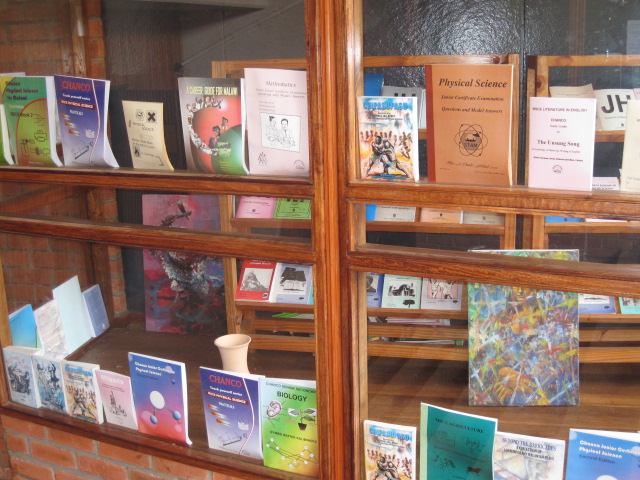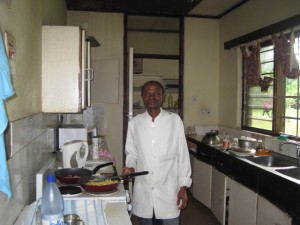Dear Colleagues:
Greetings. This is my first post—ever—but I thought my project was perhaps unusual enough to warrant blogging about (something I’ve never done in my life, so apologies in advance for any breaches of etiquette; it was Lanah’s idea, so you can blame her!).

I am a non-resident Fellow at the Center this year (I will be in residence, however, in April and hope to meet some of you then) and a research project in the field of Classics has brought me, mirabile dictu, to Africa. In fact, I am posting this installment from Zomba, Malawi, where I arrived yesterday. As it happens, I am writing this by candlelight, under my mosquito net in bed because the power is out. This is a common occurrence. Usually, it happens just when you’re cooking dinner, or at an eatery just after you’ve placed your order, which means, in both cases, that you’ll have to wait another 2 hours for your meal while it is cooked on charcoal. (I was here with my family in August, so I know this all too well firsthand.)
Anyhow, I am in Malawi researching an article about Pier Paolo Pasolini’s little-known film from 1970, “Notes for an African Oresteia” (Appunti per un’Orestiade Africana). Pasolini’s Appunti is a set of visual notes for a film version of the Oresteia of Aeschylus to be set in Africa. In it he explores the many analogies he sees between the Athens of Aeschylus’ time and the post-colonial situation of Africa in the mid- to late 1960s when eastern African nations were freshly independent. His camera documents the life and landscape of central and eastern Africa as he “auditions” the continent for a non-professional cast and location for his production. (The actual film was never made, and was clearly never meant to be made—the notes are the thing.) Agamemnon is tentatively cast, for example, as a proud, but frail, Masai warrior, Clytemnestra as an imposing medicine woman from Uganda, Orestes as a European-clad university student from Tanzania, the Erinyes as a wounded lioness from the bush. Chorus members are drawn from the ranks of the many farmers, tailors, beggars, and craftsmen that populate the open-air markets of African towns. The footage is accompanied by Pasolini’s own running commentary, passages from Aeschylus, and interviews with African students at the University of Rome. The work contains some brilliant observations, true not only to the myth, but also to the meaning of Aeschylus’ trilogy. None of it romanticizes African “primitivism.” (To depict the fall of Troy and to convey the Oresteia’s apocalyptic vision of the prophetess Cassandra, for instance, Pasolini splices in graphic footage of the brutal, “Western-style” Biafran Wars.) Rather, Pasolini seeks to universalize the significance of the Oresteia for the human condition, and, like Aeschylus before him, to underscore the political and economic complexities and contradictions of nationhood in the language of myth. Aeschylus’ maxim páthei máthos is an abiding theme.

I am following in Pasolini’s footsteps, as it were, conducting some “fieldwork” and teaching a seminar on the Oresteia for the Department of Classics here at Chancellor College (the flagship of the University of Malawi) in order to take the pulse of Pasolini’s Aeschylean vision for Africa one generation later. I have come to agree with Pasolini that the Oresteia focuses on issues still of great urgency for African nations today—authority in the family, the administration of justice in society, the importance of persuasion in public discourse—and especially in the way Aeschylus’ work marks an historical transition in ancient Attica from tribal organization and the summary justice of blood-feud to the rule of law in a democratic city-state.

An exciting discovery I have made in the process of researching this film (and in some ways the lynchpin of my project) is Pasolini’s dependence on the work of George Thomson. Thomson, Professor of Greek at the University of Birmingham until his death in 1987, as many of you may know, was a Marxist before Marxism became fashionable in the Humanities. He was (to my knowledge) the first Classicist to apply the methods of dialectical materialism systematically to the study of antiquity, which he blends with a “Cambridge School” approach to drama and myth. (Pasolini, too, was a member of the Italian Communist Party.) Thomson’s landmark book Aeschylus and Athens, published with some urgency in 1941 as a manifesto against fascism on the Continent, was used as a training manual for actors in Greece and at Vittorio Gassman’s Teatro Popolare in Italy in the early 1960s. (Pasolini translated the Oresteia for a staged production by Gassman prior to making the film.) Thomson was drawn to Marxism based on his experiences with pre-industrial, pre-capitalist Irish peasants in the Blasket Islands (where he taught himself Gaelic and was a life-long translator of Irish literature) and later Greek peasants (he was fluent also in modern Greek). It was his revised and expanded edition of Walter Headlam’s Oresteia containing Thomson’s own extensive commentary and translation (Cambridge 1938) that Pasolini had at his elbow when he began to work on his unique and powerful film, and one can clearly see Thomson’s influence throughout.

My project is an attempt to bring Pasolini’s African Oresteia and Thomson’s legacy as a scholar to a wider audience. The piece I’m working on here courses over a range of topics—not only Classics and film criticism, but also African politics, the American Civil Rights movement (including RFK’s famous 1968 speech in Indianapolis announcing MLK’s assassination in which he quotes a choral passage from the Agamemnon) and the music of jazz master Gato Barbieri (who composed and performed the film’s ethereal score).
Earlier this month I had the good fortune to meet with Thomson’s daughter, Prof. Margaret Alexiou (emerita in Classics from Harvard), and with Prof. Richard Seaford of Exeter, who, in my view, is something of an intellectual successor to Thomson in his broad, systematic, historical approach to Greek antiquity (though Seaford may dispute this label), both of whom have provided me with many anecdotes and further information about Thomson’s intellectual development. I have also been working through some fascinating unpublished correspondence in the Birmingham City Archives between Thomson and the likes of F. M. Cornford, historian Christopher Hill, Ludwig Wittgenstein, and E. M. Forster, which shed light on that development.
Such, in a nutshell, is the gist of my project. There is much more to say, but I will refrain. In future posts, however, I hope to talk about how it was that Classics came to Malawi in the first place, which is itself an interesting story with a star-studded cast. (No other African country Pasolini visited in the course of filming his Notes has a Classics department, which is why I came here to Zomba.) I may also post thoughts on what life and teaching in Malawi is like. In many ways—with the exception of mobile phones, televisions and a few more automobiles—not much has changed in the daily lives of most Africans since Pasolini filmed his Notes (and in some ways things have gotten worse).
